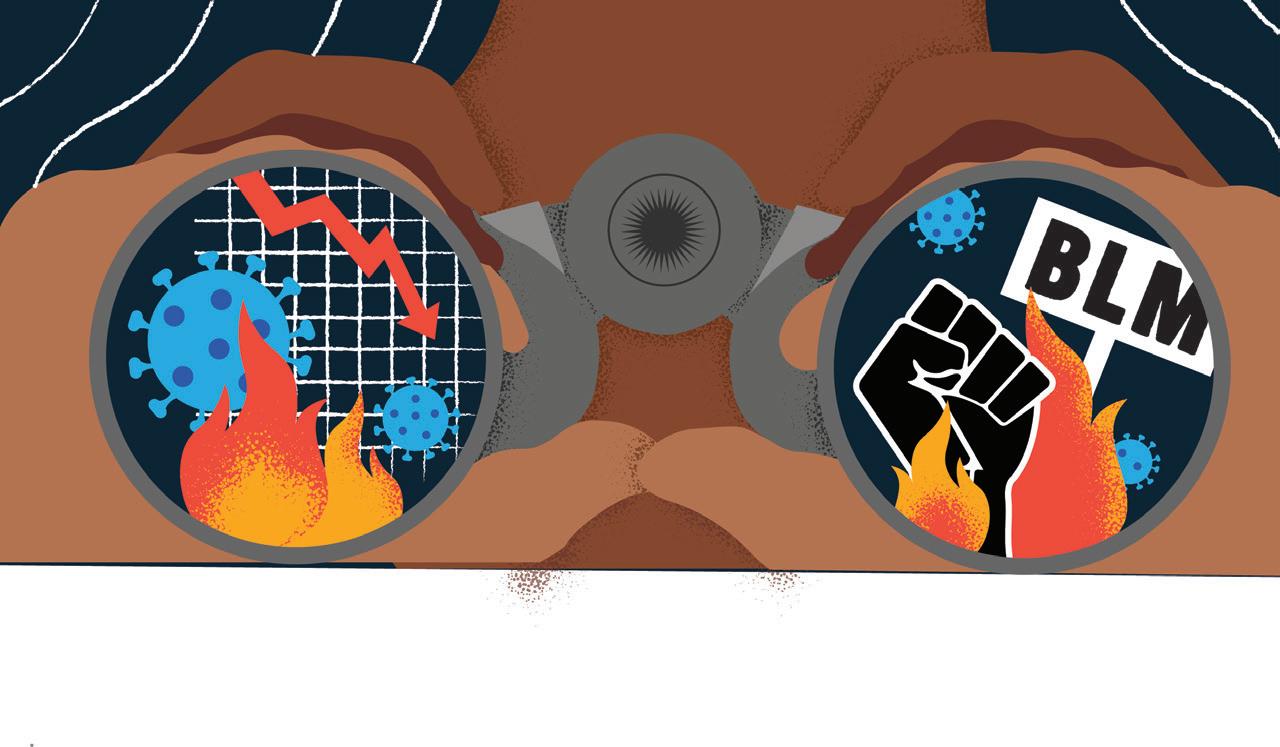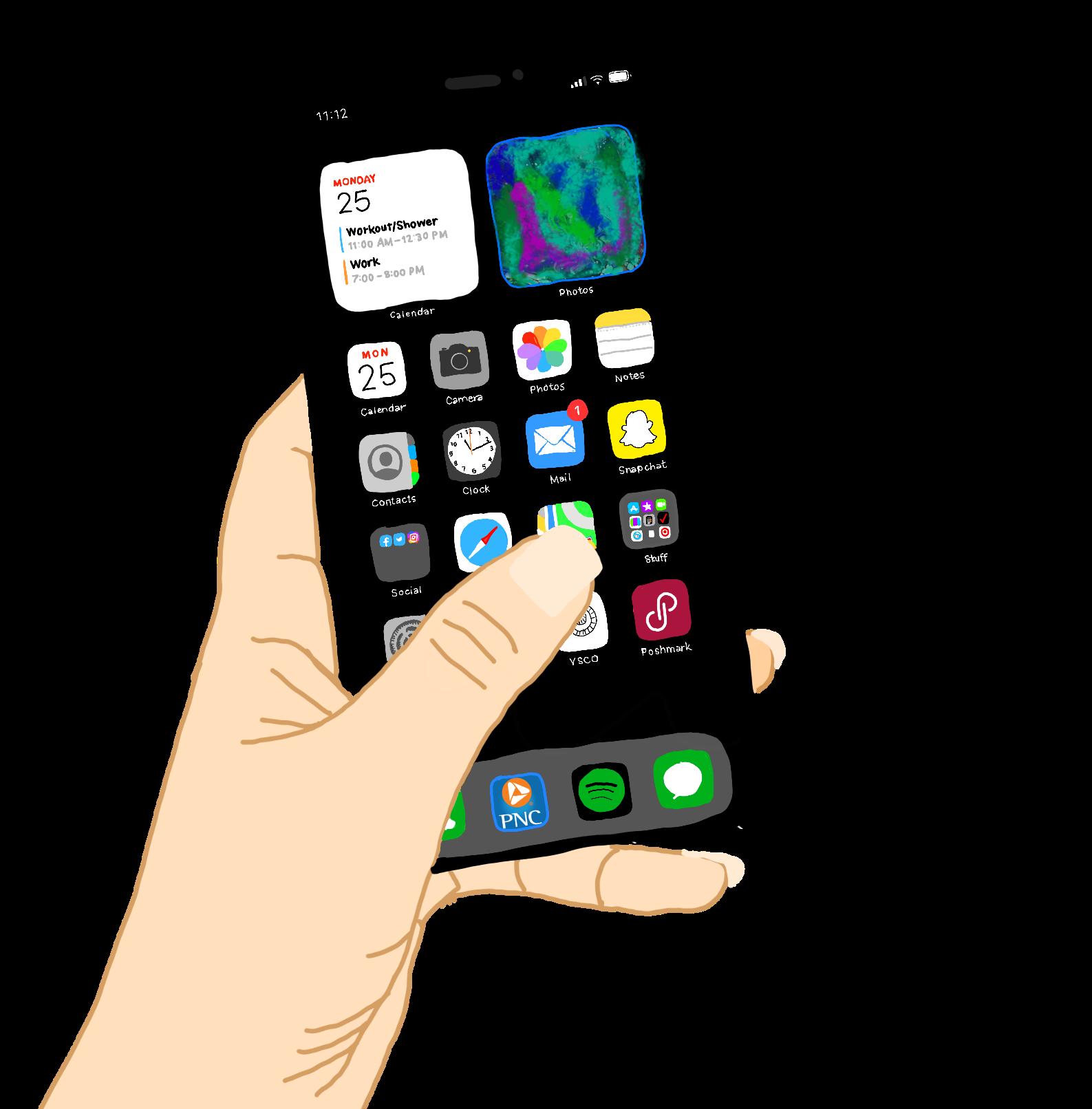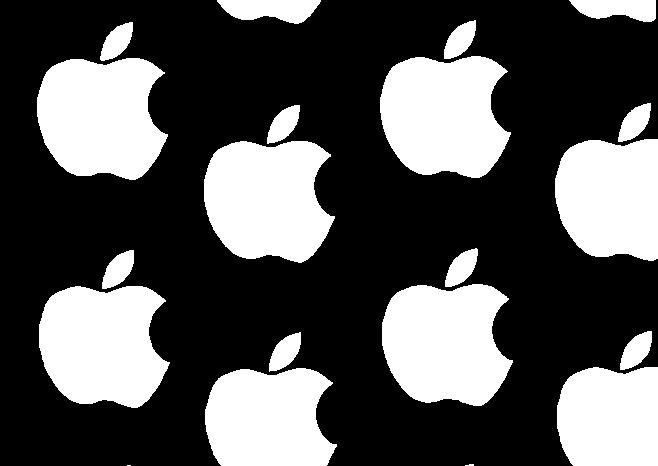
16 minute read
COVID-19 Impact on Black Individuals
THE IMPACT OF THE IMPACT OF COVID-19 COVID-19
ON BLACK ON BLACK
Advertisement
INDIVIDUALS INDIVIDUALS
WRITTEN BY
Claudia Ugbana
The recent pandemic is further proof of how racism and inequality affects Black individuals within the U.S.
In March 2020, the world was taken aback by the rise of the COVID-19 pandemic, which continues to be a problem today. The connection between racism and the effects of the pandemic, mortality rates and the impact of infection vary and are difficult to quantify, but the correlation is undeniable.
During the early days of the pandemic, many forms of media reported that Black individuals were more likely to be infected with the coronavirus and much more likely to die from the virus than other racial groups. After a dive into the ins and outs of racial disparities surrounding the virus, it became apparent why.
Black individuals were found to have underlying health conditions that make them more vulnerable to the virus as a result of social and economic issues.
While most people initially thought this was as a result of biological factors, systemic racism is the primary cause.
How does systemic racism play into the coronavirus?
For decades, the American healthcare system has continuously failed Black individuals: from health insurance coverage issues to lack of readily available resources to poor health conditions to decades of abuse and illegal experimentation on Black individuals. The coronavirus pandemic proves to be no different as Black people are once again overlooked.
Social factors, including economic disadvantages and lack of access to proper health care, can all impact a person’s life — this is the reality Black individuals are facing during the raging pandemic. For example, the National Data for the U.S reported that Black individuals make 59 cents for every dollar a white individual makes. The lack of financial stability in Black households has played a significant role in high death rates, as they are forced to work during a pandemic.
While socio-economic issues do play a major role in the effects of COVID-19 among Black individuals, this is not the central issue. The discrimination that occurs within the healthcare system within the U.S. is paramount.
First, hospitals lack diversity among leadership personnel, affecting the patients. The large gap in the ratio of white to Black doctors in medical facilities across the country causes patient-physician relationships to remain strained as Black patients are unable to fully trust the physicians hired to treat them.
—lack of financial stability in Black households has played a significant role in high death rates, —forced to work during a pandemic. “

Second, low-income neighborhoods lack resources. Residential segregation policies placed decades ago continue to affect the Black individuals within these neighborhoods, as they have little to no healthcare facilities, a lack of access to comprehensive health education, and no nearby supermarkets with healthy food options.
The system further continues to discriminate against Black individuals as the research readily available to the public discounts Black individuals. For example, The Journal of Clinical Investigation reports that while African-Americans are 13% of the entire U.S. population, only 5% of patients enrolled in clinical trials related to the Food and Drug Administration approval of new drugs are African-American. This lack of diversity is also displayed in other clinical trials conducted within the U.S.
After decades of these issues listed above, the system has yet again failed Black individuals during the coronavirus pandemic. Research conducted by APM Research Lab reports that Black individuals are among the highest number of people who have lost their lives to the virus.
What is being done to prevent the continuous death of Black individuals during COVID-19?
These issues have always existed, and the American healthcare system has always had the opportunity to rectify them. The racism within our system is not a hoax, but a factual issue that continues to worsen. The U.S. has done little to resolve these issues in order to take better care of Black Americans, but government officials have the opportunity to enact real change by following these suggestions:
11 22 33 44
Acknowledge racism and discrimination. This opens up a pathway for solutions and results.
Reorder the system. Tearing down a system that holds years of discrinimation against and torture of Black individuals, while building a system that favors them instead.
Allocate healthcare benefits, education and resources to Black individuals in need.
Educate other racial groups to stop stereotyping and see Black individuals as equal to them.
These suggestions are only the beginning of a long list of solutions that could impede the growing mortality rate of Black individuals in not only this pandemic, but in healthcare crises to come.

WRITTEN BY
Courtney Byrnes
ILLUSTRATED BY
Devin Benko
A look back on the past year and what we can learn.
The year 2020 is one that will not soon be forgotten for the historical and challenging events that characterized its 12 months. As strong as the urge may be to think “the past is in the past” and “new year, new me,” it is just as important to take the time to reflect on the past year and learn from the events.
Coincidentally, last year was off to a similar beginning to the new year with an impeachment trial of the 45th president, Donald J. Trump. While this is just an interesting parallel, it is true that history has a way of repeating if we do not learn from it. 2020 brought many prominent issues to the forefront starting with climate change as devastating fires raged across Australia in January, and in later months, across the west coast of the United States. The pandemic served as the catalyst for many other growing topics such as health, both physical and mental, and the economy. The coronavirus became a global health crisis that raised concerns over rates of infection and death and hospitals’ capacities. As a result, a shutdown was put into place to slow the spread.
As businesses shut down for the unforeseeable future and consumers spent more time at home, the economy took a sharp downturn. According to the Bureau of Labor Statistics, unemployment rates reached a historic peak in April 2020 at 14.7% with 23.1 million people reportedly out of work.
Mental health concerns began to grow as the pandemic left many in prolonged social isolation and stress levels grew around health and economic situations. The Center for Disease Control and Prevention created a page for mental health resources during COVID-19.
The summer months were characterized by over 7,750 Black Lives Matter demonstrations across the country following the death of George Floyd, according to The Armed Conflict Location & Event Data Project. The protests brought attention to police brutality and systemic racism in the country while calling for justice for victims such as Floyd, Breonna Taylor, Ahmaud Arbery, Elijah McClain and many others.
All these events seemed to come to a head in the contested November election as the pandemic, economy and racial tensions seemed to be on the ballot. Election day seemed to turn into election month, as the last state, Georgia, was not called until more than two weeks later.
With Georgia’s electoral votes going to Joseph Biden, the democratic candidate had a decisive win with his 306 votes to Trump’s 232, according to NPR. Even so, the election did not appear so set in stone to many as lawsuits, recounts and claims of election fraud followed in the months to come.
The year was not full of solely bad news as there lay a ray of hope in many of the darker events. The end of the year came with break-throughs in coronavirus vaccine developments and plans to begin vaccination. According to ACLED, the protests over the summer were 93% peaceful and the BLM movement net approval rating across all races peaked.
The November election was marked by many historic moments with record turnout—103 million early votes casted and winner Joe Biden received more than 75 million votes—and Kamala Harris became the first Black woman and person of South Asian descent elected to the vice presidency, according to The Associated Press.

For many, 2020 proved to be an eye-opening year whether that be learning something new about yourself during isolation or gaining a new perspective on the world. In an online survey shared on social media, respondents were asked to reflect back on the past year and share personal lessons they have learned.
The first question asked what event(s) of 2020 had the greatest impact on the respondent and gave examples of the pandemic, shutdown, economic downturn, BLM protests and presidential election as a refresher.
While a couple responded that all or a combination of these events greatly impacted them, most responses related to the pandemic whether that be in the form of the shutdown, isolation, quarantine or adapting to the new normal.
Other questions asked respondents to share personal take-away lessons from the events and from isolation given the time to self-reflect.
From the responses, 2020 seemed to be a time for education, finding yourself, re-evaluating relationships and reflecting on what is important in life. For many, it was also the time for finding a balance between social media and mental health.
“With social media such as Instagram or Twitter, it’s easy to want to put up a specific profile of yourself that’s inaccurate and your idea of ‘perfect,’” Logan Katoch, a student at Lake Erie College, wrote. “In reality, it’s much more important to be transparent and yourself.”
CSU student Samra Karamustafic also shared her experience with social media as she found herself “doom-scrolling” and advised to unplug for a few moments every day. “I realized that taking a break from social media and the constant notifications to do something that I enjoyed doing (reading, going to the park, etc.) did wonders for my mental health” she wrote.
2020 helped put things in perspective and showed us what really matters.
“It is important to celebrate the small things and focus on your mental health,” Sam, an Engineering Student at CSU, wrote. “Don’t take the small things for granted like something as simple as going out with friends.”
The times are unpredictable, so you might as well seize the day—Carpe Diem!
“Take every opportunity that comes your way no matter how low your mood or how high the perceived risk.” wrote CSU student Jeremy Biello.
As important as keeping up with our friends is, we also must cherish our family, both near and far.
“Although I can be a homebody and I love to spend time alone, I learned that it is important to talk to people and how much I need others,” Jacquelyn Wilson, a student at CSU, wrote. “I appreciate my family more now; my immediate family because I am stuck with them, but also my extended family because I have not seen them in so long.”
And lastly, surrounded by many historical moments has us wondering what our legacy will be.
“This is a time that will live on in history forever. Our decisions now will impact generations to come,” CSU student Megann Rosecrans wrote. “It’s important to make sure you’re on the right side of history so you don’t embarrass yourself when you’re sharing stories of these times with your grandkids!”


IPHONE HOME SCREEN TOURS












WRITTEN BY
Eric Seitz
ILLUSTRATED BY
Emily Williams

They say the Home Screen is the window to the soul… Wait, they don’t? Well, whatever… Alex Ruggieri Marketing Major // Senior “I like to make my Home Screen match the season
You’ve seen the weekly reports. You and my moods! This is my winter-themed screen know that you spend an astonishingly that reminds me of the coziness of the season! I like large amount of your day staring at it. having a calendar widget to keep me organized and So it makes sense that you might make little photos of family, friends, & quotes to inspire painstaking efforts to give your phone’s me. For something I look at so much every day, I home screen the best, most efficient, most aestheti- feel like it should be beautiful and make me smile!” cally pleasing layout it can have. This rings especially This is a woman who has put some THOUGHT into true in light of Apple’s recent iOS14 update, which her Home Screen. The minimalist app icons with a introduced loads of customization options to the muted color palette hits home Alex’s cozy vibe here. home screen. Her widgets are visible enough to give the screen
There’s a reason it’s called the home screen. It’s some variety, but they’re not so intense that they where you stop for a moment while you’re heading take over the other apps. somewhere else. It’s where you keep coming back to at the end of the night (no matter how many hours Sarah Rutherford you may spend on TikTok). It’s your base. So wanting Professor of Graphic Design to make it your own is understandable — natural, “I’ve kept my home screen as some version of this even. layout for years. I purchased an SE model phone be-
With that in mind, we wondered: What do different cause I prefer the small size, which means the screen people’s home screens look like? What makes people capacity is limited. I also set up the zoom view for organize them the way they do? Why does my mother my poor aging eyes, further restricting how many have a folder on her phone titled “D De”? (Answer: apps appear on the home screen. All the apps I use she definitely made it by accident). All these burning most are on the bottom half of the screen, in easy questions drove us to one decision: we had to ask reach of my thumb. I tried the new widget options the CSU community these hard-hitting questions but didn’t like them. That probably says more about ourselves. So with that, take a look below at the my dislike of technological change than the actual shining examples of the Home Screens of members functionality of the widget layouts though!” of the CSU community. For many, functionality is the highest priority, and that’s completely understandable! Megan Baranuk (Vindi’s editor-in-chief!) I love the idea of putting the most used apps Promotional Communications Major // Senior lowest on the screen for easy reachability. “I’ve organized my home screen into color-coded Also, the zoom view just gives those beausections because I find it very satisfying to see the tiful app icons a chance to shine even more! colors flowing from one to another. My background is I mean, I never get tired of staring at that a CareBear in the clouds because I think it's so cute, Instagram gradient. and I've recently had an obsession with everything 2000s.” José Mendez
As you can see, Megan has the sociopathic tendency Political Science Major // Senior to organize her app icons based on their color (just “I wanted to go with a space theme for my kidding, we don’t think it’s sociopathic — but we Home Screen since I’m interested in space. do wonder: why?). As you can see, Megan’s put the I found the background on the internet and GarageBand app on her first page (FIRST PAGE!), and created a few custom icons for Snapchat, when I asked, she had no real reason for placing it Twitter, and TikTok to try and create a space there other than its perfect placement between the feel. I gave the Snapchat ghost a space suit, red and orange of her gradient. made the TikTok logo into a comet, and I tried
Megan, maybe 2021 is the year of putting largely making Twitter bird into a constellation. I useless apps where they belong. never got around to doing the other icons, but maybe someday. In terms of layout, I knew
There’s a reason it’s called the Home Screen.


that the apps I have here are the apps I use the most, so I wanted them on my first page. Additionally, I added widgets to make it easier to manage battery and keep on top of the news.”
I have it on good authority that José downloaded the seven-day free trial of Adobe to make those icons in Illustrator, and that’s Home Screen dedication if I ever saw it. You can really learn a lot about someone based on what they use their Adobe free trial for. What did we learn about José, you ask? This man is not to be trifled with.
Anyway, this layout is pretty classy. I’m digging the way that the widgets break the lower part of the screen into quadrants — it gives the layout some visually pleasing balance. Also, José I’m not sure what’s going on, but your widget clock and your phone clock are four minutes apart. Maybe get that checked out?
Kayla Ball
Communications, Mathematics, and Statistics Major
“I like my apps to be color-coded because it’s aesthetically pleasing to me. I don’t use folders because I like all of the apps being out and being able to be seen. I have a neutral background depicting the season and then I like to try and have pictures according to the color scheme on each of my pages of friends and interests.”
We’ve got another color coder on our hands, folks. Though this one is a bit more fleshed out because Kayla has all five pages of her Home Screen sorted by color. To boot, she also has placed images and widgets in the color section that they fit, tying the whole Home Screen together. The black-andwhite background image helps the colored icons to stand apart, and the images that match the colors of the app icons give this Home Screen a strong visual theme.




Alex Rugieri
Sarah Rutherford

Kayla Ball








